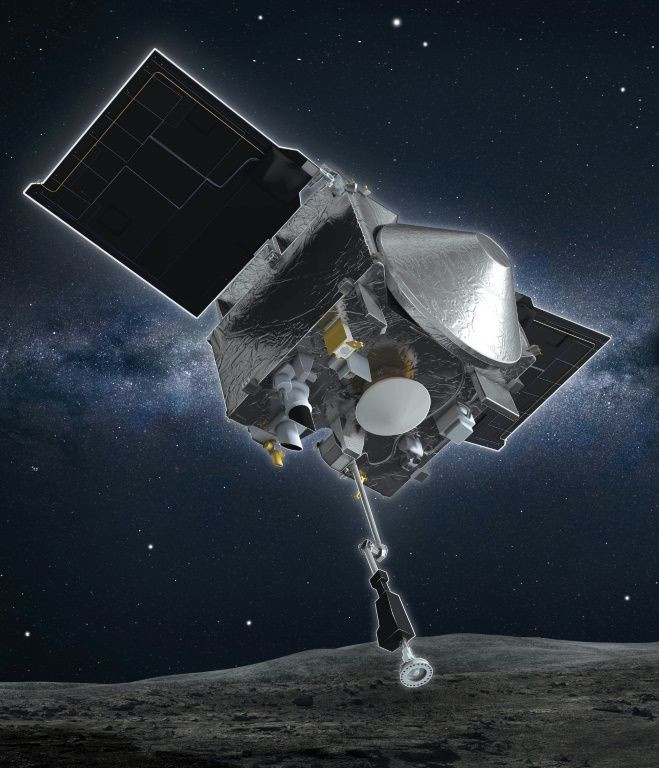NASA Rocket With 'Potentially Hazardous' Asteroid Sample Headed Toward Earth At 600mph
KEY POINTS
- NASA'S OSIRIS-REx is on its way back home with a sample of asteroid Bennu
- The spacecraft's projected return date to Earth is Sept. 24, 2023
- The capsule containing the asteroid sample will parachute to the Utah Test and Training Range, where scientists will be waiting
After spending almost five years in space, NASA's asteroid probe is finally on its way back to Earth, carrying with it a sample from asteroid Bennu.
At about 4 p.m. EDT Monday, NASA's OSIRIS-REx, which stands for Origins, Spectral Interpretation, Resource Identification, Security, Regolith Explorer, began its two-and-a-half-year journey back to Earth, NASA said in a press release.
Traveling at around 600 miles per hour (nearly 1,000 kilometers per hour), the spacecraft is expected to arrive on Sept. 24, 2023.
When OSIRIS-REx returns, the capsule containing the rocks and dust collected from Bennu in October 2020 will separate from the spacecraft and enter Earth's atmosphere, where it will parachute to the Utah Test and Training Range in Utah's West Desert. Scientists will be waiting at the site to retrieve the capsule.
“OSIRIS-REx’s many accomplishments demonstrated the daring and innovate way in which exploration unfolds in real-time,” said Thomas Zurbuchen, associate administrator for science at NASA Headquarters.
“The team rose to the challenge, and now we have a primordial piece of our solar system headed back to Earth where many generations of researchers can unlock its secrets,” he continued.
After the successful mission of retrieving pieces of the asteroid Bennu last year, the next big goal of NASA scientists is to bring the sample to Earth for further study.
“Our whole mindset has been, ‘Where are we in space relative to Bennu?’” said Mike Moreau, OSIRIS-REx deputy project manager at NASA’s Goddard Space Flight Center in Greenbelt, Maryland. “Now our mindset has shifted to ‘Where is the spacecraft in relation to Earth?’”
OSIRIS-REx's return mission to Earth is highly critical as scientists need to ensure that the sample will make it to the planet successfully. Although the spacecraft still has plenty of fuel left, the team is trying to preserve as much as possible to accommodate any potential extensions.
The OSIRIS-REx team emphasized the importance of making accurate calculations on the spacecraft's course as this would allow them to make adjustments necessary for the success of the return mission. There is little room for errors in course adjustment.
“There’s a lot of emotion within the team about departure,” Moreau said. “I think everyone has a great sense of accomplishment because we faced all these daunting tasks and were able to accomplish all the objectives thrown at us. But there’s also some nostalgia and disappointment that this part of the mission is coming to an end.”
NASA launched OSIRIS-REx in 2016 as the first U.S. asteroid sample collection mission. It arrived at Bennu in 2018 and orbited the asteroid for over two years.

© Copyright IBTimes 2024. All rights reserved.





















